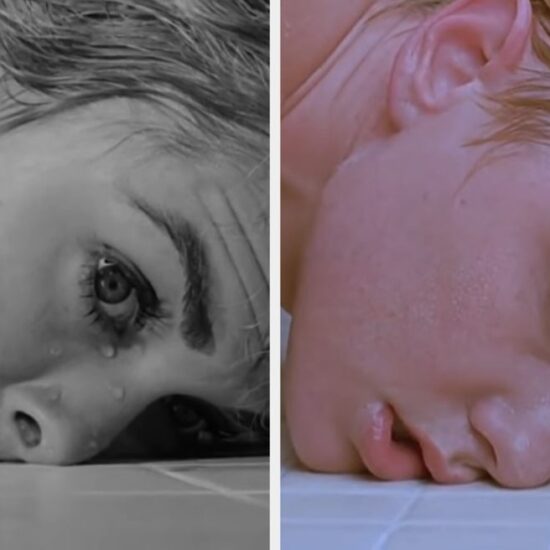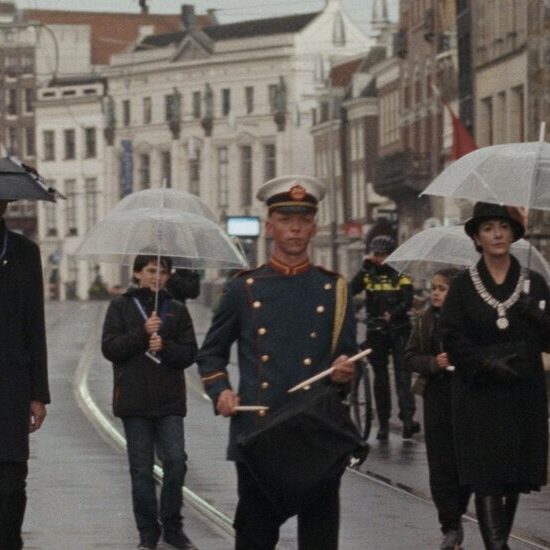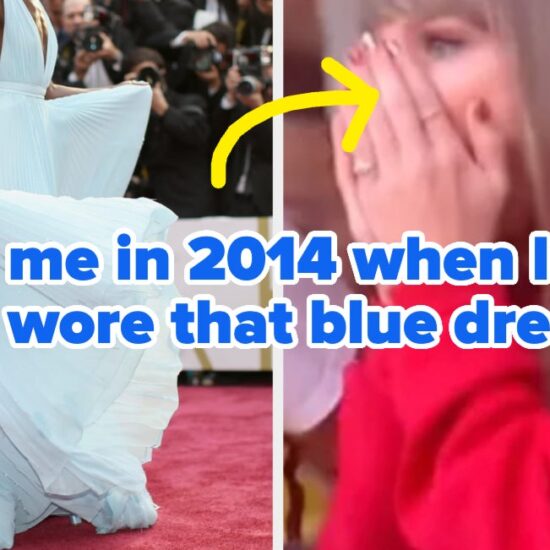
My son’s first movie was “La La Land,” which he watched strapped to my chest during a baby-friendly matinee in Brooklyn. He was 7 months old then, hungry and appropriately fussy, which means that I spent most of the movie standing at the back of the theater — nursing, jiggling, shushing — and that neither of us has seen “La La Land” all the way through. But you can’t say I didn’t start him early.
For me, moviegoing is a pleasure learned in the 1980s from my own mother. She mostly took me to movies that she wanted to see — “Stranger Than Paradise,” “Heat and Dust.” That decade brought plenty of kid-centered blockbusters too: “E.T.,” “The Goonies,” “The Princess Bride.” Moviegoing is a habit I’ve hoped to instill in my own children. A theatrical experience insists that we all watch the same thing at the same time. At home, on movie night, I’m as likely to be dealing with the dishes or scrolling on my phone. In a theater, we share the experience. Also: popcorn.
But as we’re not superhero fans (and unlike my mother, I balk at taking school-age kids to R-rated films), our moviegoing has been sporadic. Most months, there’s nothing we want to see in theaters. We’re not alone.
In the spring, Matt Singer, the editor and critic at ScreenCrush.com, posted on Twitter, “As a parent of little kids it would be great if there was literally *any* movie in theaters right now I could take them to.” His choices at the time were “Shazam! Fury of the Gods,” a PG-13 sequel with a body count that would have terrified his 5-year-old, or “Puss in Boots: The Last Wish,” which had already been running for four months, mostly because exhibitors keen to attract a family audience had no other options.
Now, in August, there are a few more films in wide release. My kids, 7 and 10, recently saw “Elemental,” Pixar and Disney’s latest animated collab, with my mom. (Her tastes have mellowed.) Theaters are still showing the live-action remake of “The Little Mermaid” and the computer-animated “Spider-Man: Across the Spider-Verse.” “Ruby Gillman, Teenage Kraken” seems to have come and gone more quickly, though it remains available on demand.
David A. Gross, a film consultant who publishes a newsletter on box office numbers, estimates that family films will earn about $4.9 billion this year, commensurate, or nearly, with recent prepandemic totals. But there are only 12 major theatrical releases currently scheduled for the whole of 2023, about half as many as in 2019. And the lineup, which includes the current “Teenage Mutant Ninja Turtles: Mutant Mayhem” and the forthcoming “Paw Patrol: The Mighty Movie” and “Trolls Band Together,” is not particularly inspiring.
“The companies aren’t in it for charity,” Gross said. “They’re going make movies that have an advantage.”
Of these 12, a third could reasonably be called original: “Elemental,” “Ruby Gillman” and the forthcoming “Wish,” with Ariana DeBose voicing Disney’s latest animated heroine, and “Migration,” about a family of ducks written improbably by Mike White (“White Lotus”). The others all depend on pre-existing intellectual property — cartoons, video games, books. Many of these movies, though by no means all, have a lowest-common-denominator feel, testifying to conservatism among studios and a deficit of imagination and ambition.
So what happened to the great family movie?
Well, a lot of things. “It’s cultural, it’s technological, it’s financial, it’s sociological,” said Paul Dergarabedian, a senior analyst at Comscore, a media analytics company.
While certain stressors on the family film predate 2020, the pandemic obviously compounded the current predicament: It disrupted the supply chain, pushed many families out of the moviegoing groove and diverted quality releases to streaming services. Of the major genres, the family film has been the slowest to rebound theatrically, which has made studios reluctant to take chances on a wide release for riskier material.
“Right now, the question is what does it take to get any movie in the theater that isn’t giant branded I.P.,” said Nina Jacobson, a producer and a past president of the Buena Vista Motion Pictures Group, a studio in the Walt Disney Company. The theatrical marketplace, she suggested, has largely stopped taking those chances, creating a closed loop. “If you don’t give people anything to go to see other than Marvel movies, then you can say only Marvel movies work,” Jacobson said.
But family films have been undergoing a shift that predates both 2020 and Marvel dominance. The G rating, a stalwart of the films of my childhood, has nearly disappeared, a corollary to the reluctance of producers of family films to admit that they’re meant for families.
“My entire career, there has been a shortage of movies that the youngest kids can see in the theater,” said Betsy Bozdech, an editorial director at Commonsense Media, a site that rates and reviews media aimed at children. “The G rating basically doesn’t exist anymore.” This year, we will probably see no full-length G-rated movies. (Even the “Paw Patrol” sequel is PG.) Only a decade ago, there were 18. In 2003? More than 30.
The dearth of family films is also a function of the much chronicled demise of midbudget movies — including ones that Jacobson oversaw, like “Freaky Friday” and “The Princess Diaries.” Midbudget movies don’t have to work as hard to earn back their investment and they can afford to appeal to a narrower tranche of the moviegoing public, meaning the releases can be more particular in tone and style.
Since the turn of the millennium, there has been a related move away from live-action theatrical family films and toward animation. What live action there is, as in the case of Disney’s high-grossing remakes, often relies on so many computer-generated effects that it doesn’t seem live at all. (Compare the recent, dutiful live action “Beauty and the Beast,” with 1989’s delightful “Honey, I Shrunk the Kids” or 1991’s delirious “Hook.”) These movies can still delight and make meaning, as with the ecstatic kid reactions to Halle Bailey’s Little Mermaid. But there’s particular wonder and possibility in seeing characters who look like you or behave like you onscreen, in real-world or real-world adjacent situations.
“To see a young lead in a movie who you identify with, to see a story with you in mind, to see that you matter in that storytelling as a young person, those are movies that you hold onto,” Jacobson said.
No one has to go to the movies anymore. Wait a month or two or six and you can see these same films from the comfort of your couch. And quality may not even matter absolutely. Certainly there are days — rainy or too hot — when the temptation of a climate-controlled seat and Raisinets suffices, no matter the movie on offer.
But if we want movie theaters to survive, that will mean building the moviegoing habit in children, which means giving them an experience, beyond the candy counter, that keeps them coming back. A third “Trolls” movie may not offer that. Instead studios will need to get comfortable with some risk and some trust, making movies for children that don’t talk down to them.
“Kids are more sophisticated and have the emotional capacity to be able to absorb things that traditional Hollywood doesn’t think they can absorb,” said Todd Lieberman, a producer whose coming-of-age World War II tale, “White Bird: A Wonder Story,” will be released later this year.
We can’t expect an “E.T.” every year, or even movies commensurate with the gems I recall from my youth: Agnieszka Holland’s “The Secret Garden,” Alfonso Cuarón’s “A Little Princess,” John Sayles’s “The Secret of Roan Inish.” But we should expect better. And better remains possible.
Prestige directors are still interested in family movies — see “Guillermo del Toro’s Pinocchio,” Greta Gerwig’s “Little Women” and planned Narnia movies. And have you seen the “Paddington” movies? Perfection. So it doesn’t seem unreasonable to imagine a future in which there are more and finer children’s movies in theaters, ones that send you back out into the light blinking and amazed. As an adult moviegoer, I often feel spoiled for choice. If we want children to return as adults, we should spoil them, too.
“Give people great original family content and they will show up,” Jacobson said. “But it’s on us to give it to them.”













